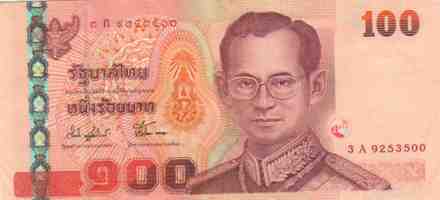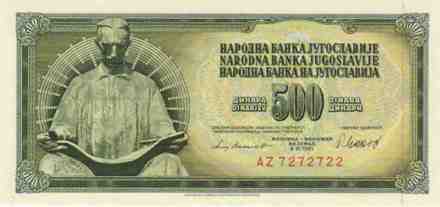

Alexander Graham Bell (1847 1922) was an eminent scientist, inventor, engineer and innovator who is credited with inventing the first practical telephone. Many other inventions marked Bell's later life, including groundbreaking work in optical telecommunications, hydrofoils and aeronautics. In 1888, Alexander Graham Bell became one of the founding members of the National Geographic Society. Bell's inventions spanned a wide range of interests and included a metal jacket to assist in breathing, the audiometer to detect minor hearing problems, a device to locate icebergs, investigations on how to separate salt from seawater, and work on finding alternative fuels. Bell is also credited with the invention of the metal detector in 1881.
Michael Faraday, (1791 1867) was an English chemist and physicist who contributed to the fields of electromagnetism and electrochemistry. He is credited with the invention of the dynamo. Faraday studied the magnetic field around a conductor carrying a DC electric current, and established the basis for the electromagnetic field concept in physics. He discovered electromagnetic induction, diamagnetism, and laws of electrolysis. His inventions of electromagnetic rotary devices formed the foundation of electric motor technology. The SI unit of capacitance, the farad, is named after him, as is the Faraday constant, the charge on a mole of electrons (about 96,485 coulombs).
Graham Bell on the reverse (top image) of Royal bank of Scotland's One Pound note.
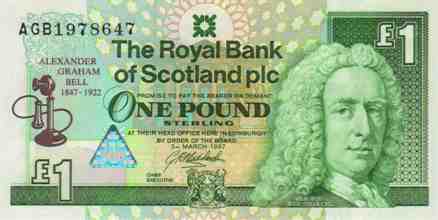
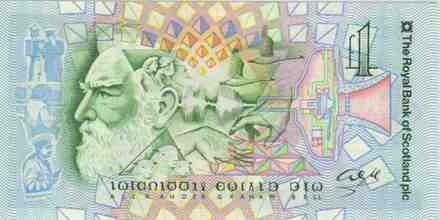
Marconi on 2000 Italian Lira
Guglielmo Marconi (1874 1937) was an Italian inventor, best known for his development of a radio telegraph system, which served as the foundation for the establishment of numerous affiliated companies worldwide. He shared the 1909 Nobel Prize in Physics with Karl Ferdinand Braun, "in recognition of their contributions to the development of wireless telegraphy."
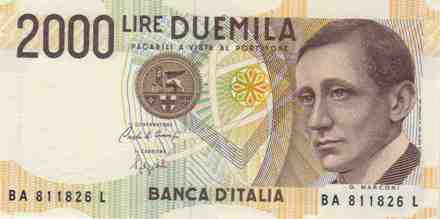
Telsa on 100 and 1000 Yugoslavian Dinara
Telsa on 500 Yugoslavian Dinara
Nikola Tesla (1856 1943) was an inventor, a mechanical and electrical engineer who made some of the most important contributions to the birth of commercial electricity, and is best known for his many revolutionary developments in the field of electromagnetism in the late 19th and early 20th centuries. Tesla's patents and theoretical work formed the basis of modern alternating current (AC) electric power systems, including the polyphase system of electrical distribution and the AC motor. The SI unit of magnetic flux density, the tesla, was named in his honor. Aside from his work on electromagnetism and electromechanical engineering, Tesla contributed in varying degrees to the establishment of robotics, remote control, radar, and computer science, and to the expansion of ballistics, nuclear physics, and theoretical physics.
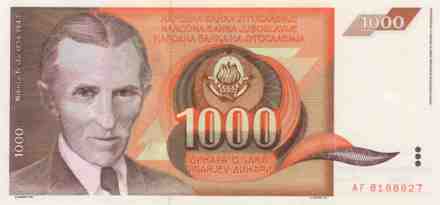
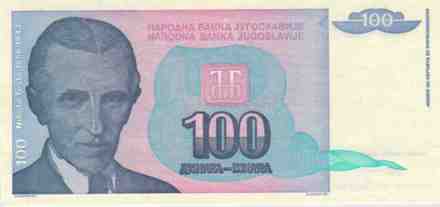
3
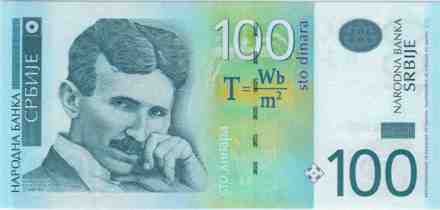
Everything that can be invented has been invented... US Patent office Director in 1899 :)
William Thomson (Lord Kelvin) (1824 1907) was a Belfast-born mathematical physicist and engineer. At the University of Glasgow he did important work in the mathematical analysis of electricity and formulation of the first and second Laws of Thermodynamics, and did much to unify the emerging discipline of physics in its modern form. Lord Kelvin is widely known for developing the basis of Absolute Zero, and for this reason a unit of temperature measure is named after him He also had a career as an electric telegraph engineer and inventor.
Siemens on 20 German Reichsmark (1929)

Werner von Siemens (1816 1892) was a German inventor and industrialist. Siemens' name has been adopted as the SI unit of electrical conductance, the siemens. He was also the founder of the electrical and telecommunications company Siemens. In his initial days he worked for improving the telegraph system and later had patents for electric meters and other devices.
Kelvin on Scotland's Clydesdale bank's 20 Pounds
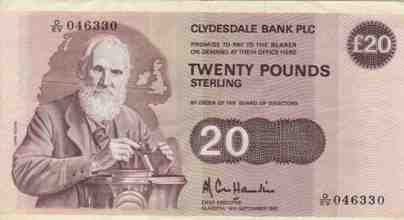
Orsted on 100 Danish Kroner
Hans Christian Ψrsted (1777 - 1851) was a Danish physicist and chemist who is most widely known for observing that electric currents induce magnetic fields, an important aspect of electromagnetism. Ψrsted noticed a compass needle deflected from magnetic north when electric current from a battery was switched on and off, confirming a direct relationship between electricity and magnetism. The Oersted (Oe), the cgs unit of magnetic H-field strength, is named after him.
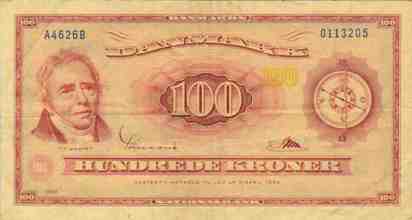
Volta on 10000 Italian Lire
Alessandro Volta (1745 1827) was an Italian physicist known especially for the development of the first battery (electrochemical cell). In 1800, Volta literally piled up several pairs of alternating copper (or silver) and zinc discs (electrodes) separated by cloth or cardboard soaked in brine (electrolyte) to provide a steady current. An additional invention pioneered by Volta, was the remotely operated pistol. He made use of a Leyden jar to send an electric current from Como to Milan (~50 km or ~30 miles), which in turn, set off the pistol. The current was sent along a wire that was insulated from the ground by wooden boards. This invention was a significant forerunner of the idea of the telegraph which also makes use of a current to communicate.
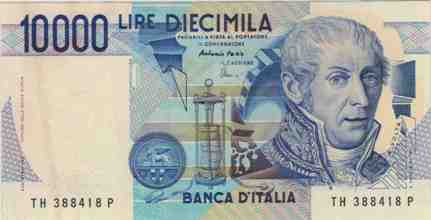
England portrayed Faraday on 20 Pound banknote
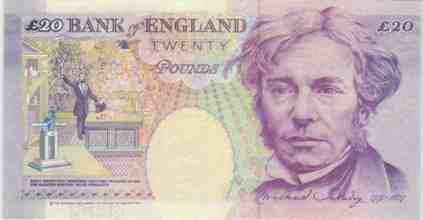
Kaplan on 1000 Austrian Schillings (1961)
Viktor Kaplan (1876 1934) was an Austrian engineer and the inventor of the Kaplan turbine for generating Hydel power. He was a civil engineer and specialized in diesel engines early in his career. Kaplan turbine, was a revolutionary water turbine that was especially fitted to produce electricity from large streams with only a moderate incline.
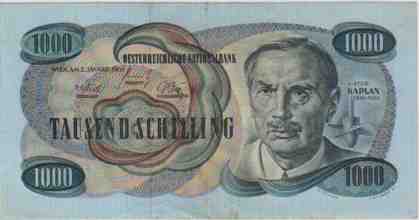
George Stephenson (1781 1848) was an English civil engineer and mechanical engineer who invented the first steam locomotive engine for railroads and built the first public railway line in the world to use them, and he is renowned as being the "Father of Railways". His rail gauge of 4 feet 8.5 inches (1,435 mm), sometimes called "Stephenson gauge", is the world's standard gauge. He had also made important contributions to the invention of the safety lamp.
Franklin on 100 US Dollars
Welsbach on 20 Austrian Schillings
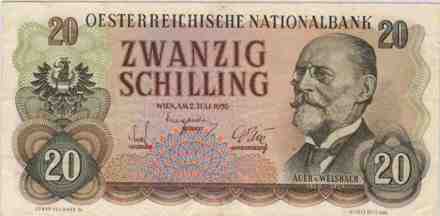
Carl Auer Welsbach (1858 - 1929) was an Austrian scientist and inventor who is particularly well known for his work on rare earth elements, which led to the development of the flint used in modern lighters, the gas mantle which brought light to the streets of Europe in the late 19th century, and the development of the metal filament light bulb. He received a patent on his development of the gas mantle, which he called Auerlicht, using a chemical mixture of 60% magnesium oxide, 20% lanthanum oxide and 20% yttrium oxide which he called Actinophor.
Jefferson on 2 US Dollars
Thomas Jefferson (1743 1826) was the third President of the United States. A polymath, Jefferson achieved distinction as, among other things, a horticulturist, political leader, architect, archaeologist, paleontologist and inventor. Jefferson invented many small practical devices, such as a rotating book stand and a number of improvements to the polygraph, a device that made a copy of a letter as he wrote the original.
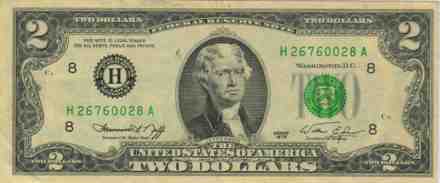
Polhem on Swedish 500 Kroner
Christopher Polhem (1661 1751) was a Swedish scientist, inventor and industrialist. He made significant contributions to the economic and industrial development of Sweden, particularly mining by making many revolutionary equipment used in the mining industry.
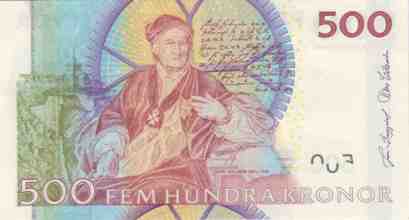
Ressel on Austrian 500 Schilling
Joseph Ressel (1793 - 1857) was the inventor of ship's propeller. Among other Ressel's inventions are pneumatic post and ball and cylinder bearings. He was granted numerous patents during his life.
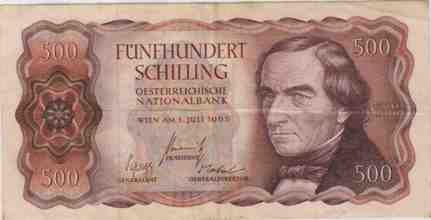
Stephenson honoured on 5 Pounds (England)
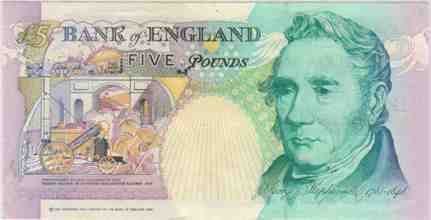
Benjamin Franklin (1706 1790) was one of the Founding Fathers of the United States. A noted polymath, Franklin was a leading author and printer, political theorist, politician, scientist, inventor, civic activist, statesman and diplomat. As a scientist, he was a major figure in the history of physics for his discoveries and theories regarding electricity. He invented the lightning rod, bifocals, the Franklin stove, a carriage odometer, and the glass harmonica. Franklin never patented his inventions. He was the first to label charge as positive and negative respectively, and he was the first to discover the principle of conservation of charge.
Kubitschek on 100 Brazilian Cruzados
Juscelino Kubitschek (1902 1976) was a prominent Brazilian politician who was President of Brazil from 1956 to 1961. Actually he was not an inventor but he aggressively promoted the construction of hydro-electric power stations in Brazil and Brazil today generates more than 85% of its electricity through eco-friendly hydro sources.
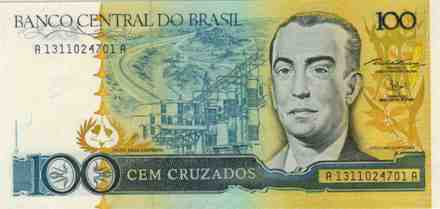
Hansemann on 50 German Reichsmarks
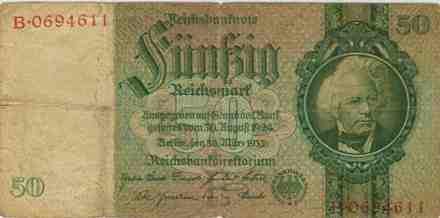
Ghega on 20 Austrian Schillings
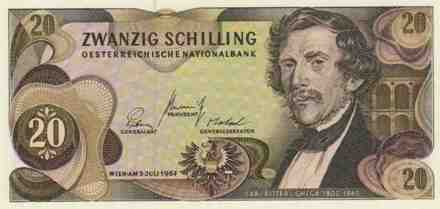
King Rama IX on 100 Thai Baht.
David Hansemann (1790 1864) was a Prussian politician and banker who was engaged in the building of railways in the Rhine Province. He wrote several memoranda about railways. He may well be qualified as a railway engineer.
Carl Ritter von Ghega (1802 1860) was a railway pioneer, hydraulic and civil engineer.
Bhumibol Adulyadej (1927- ), is the King of Thailand also known as Rama IX Bhumibol holds a patent for a waste water aerator named "Chai Pattana", and several patents on rainmaking. He is also a speed boat designer.
